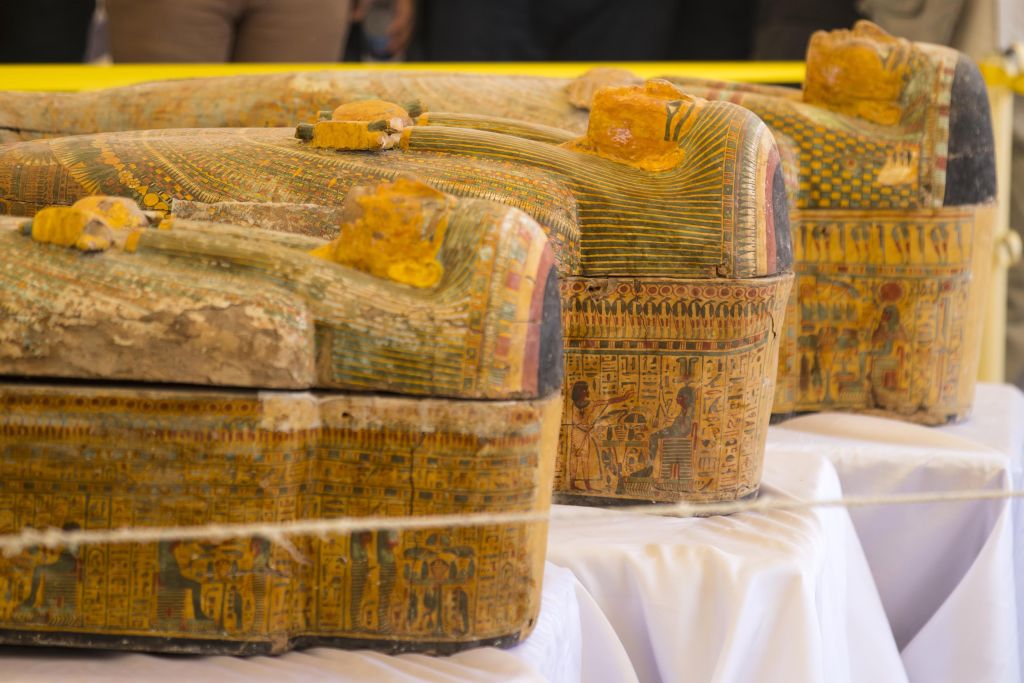For thousands of years, Saqqara, Egypt has been part of the Memphis necropolis — a space that’s now a UNESCO World Heritage Site and the site of a host of tombs and structures that span multiple dynasties that ruled a nation. Archaeologists have been drawn to the region in recent years due to the wealth of historically relevant material buried there, from buildings to bodies.
At The New York Times, Isabella Kwai has the details on a new discovery there: over 100 coffins, dozens of funeral statues and a number of mummies, dating back to approximately 2,500 years ago. Khaled el-Enany, Egypt’s minister of tourism and antiquities, described them as “in perfect condition of preservation.”
Besides the overall benefits of finding so many artifacts of that era, the archaeologists’ discovery also settles an important historical question: where did Egypt’s 26th Dynasty bury its dead?
While significant on its own, this discovery is also part of a larger series of findings at Saqqara, including that of 59 coffins last month. According to the article, scientists expect to unearth more — including a site where bodies were mummified.
The New York Times reports that the artifacts discovered on the site will eventually find homes at the country’s museums, including the under-construction Grand Egyptian Museum. When completed, said museum will be the repository for a vast array of historical objects, and promises to be a global destination. Based on these discoveries in Saqqara, the museum’s collection just got a little bit bigger.
Thanks for reading InsideHook. Sign up for our daily newsletter and be in the know.

















